The missing collections campaign asks people with a passion for plants to put together a National Plant Collection of their own and join the Plant Heritage community in growing, sharing and saving plants.
Every year we highlight much-loved plant groups that are currently not represented by a National Plant Collection and this year we are focussing on pollinator friendly plant groups. Thanks to this campaign, in recent years we have seen new collections coming through for Verbena, Alcea, Ginkgo, Thalictrum, Tradescantia and Aeonium.
Though we may choose some each year to highlight, there are actually hundreds of groups of garden plants grown in the UK that don't have collections. So whether you're curious about cacti or crazy for conifers, there will be a plant group to suit your passion.
Top 12 missing collections plants for 2023
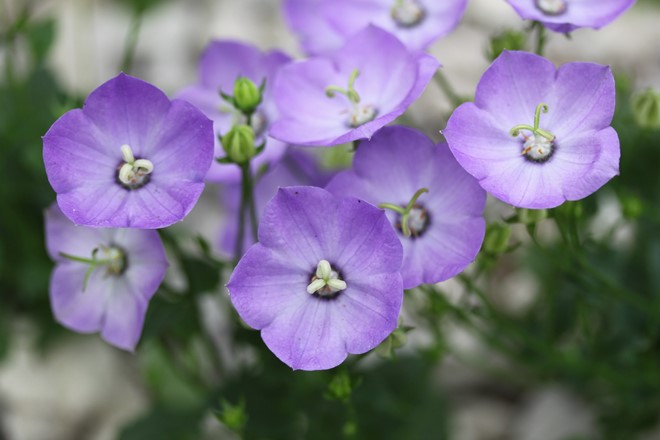
Campanula 'Samantha'
Astrophytum
This small genus of north American cacti are sometimes called star cacti. With large yellow flowers in late spring and summer, they will survive in a cool glasshouse if kept dry. Of the six species, most are globular. International plant breeders have created many highly ornamental hybrids and cultivars, although few are yet available in the UK.
Campanula
Also known as bellflowers, these distinctive open, bell-shaped flowers come in shades blue, pink, purple and white, and range from creeping alpine plants to tall border favourites. There are about 80 species and 232 cultivars currently available but any potential collection could choose to do just a subset of these, for example, just Campanula persicifolia cultivars.
Colocasia
Grown from edible tubers known as taro, these dramatic, foliage plants can be grown outside in the summer in a warm, sheltered spot, or can be grown in greenhouses or conservatories if space allows. There are 19 cultivars available in the UK.
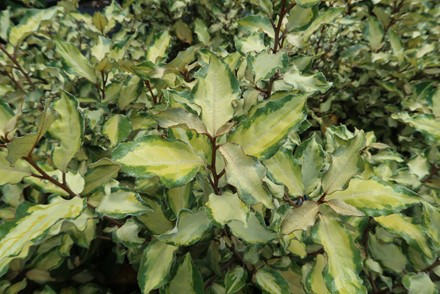
Elaeagnus × submacrophylla Maryline®
Echinacea
Loved by pollinators, these hardy, herbaceous perennials look great in prairie style planting or in mixed borders. There are around 200 cultivars listed in the RHS Plantfinder, but a collection could consist of just a subsection, such as plants introduced before 2010.
Elaeagnus
For delicious scent which fills the air on a still day, Elaeagnus is a winner. The various species flower either in spring and early summer or in the autumn. They are also known for foliage interest and some have edible berries too. There are 45 species and cultivars currently available.
Erigeron
Commonly called fleabanes, and related to daisies, Erigeron can be annuals, biennials or perennial. They thrive in sunny spots with some happily growing through the cracks in paving. There are 30 cultivars currently available in the UK, but with hundreds of species found worldwide.
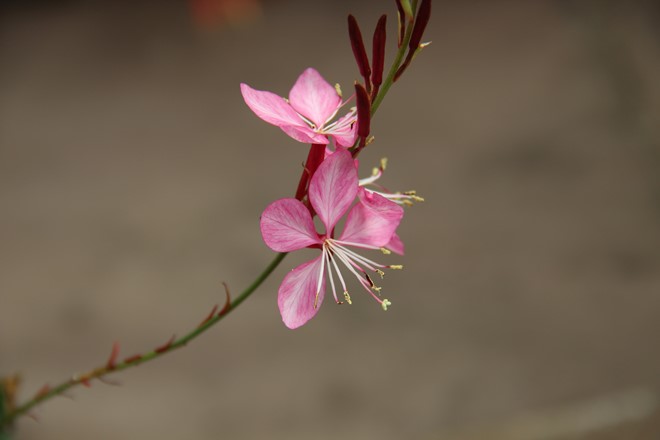
Gaura lindheimeri Rosyjane (PBR)
Gaura (Oenothera)
Recently reclassified as Oenothera (G), these are drought tolerant, deciduous perennials, that flower for a long period at the end of summer and into autumn. There are about 50 cultivars listed in the RHS Plant Finder, largely in shades of pinks and whites. Popular in prairie style planting.
Knautia
Knautias can be found in the UK growing wild in meadows, but there are also species and cultivars bred for cottage gardens and herbaceous borders. The pincushion flowers are a magnet for butterflies and bees. There are 5 species and 10 cultivars currently in cultivation in the UK.
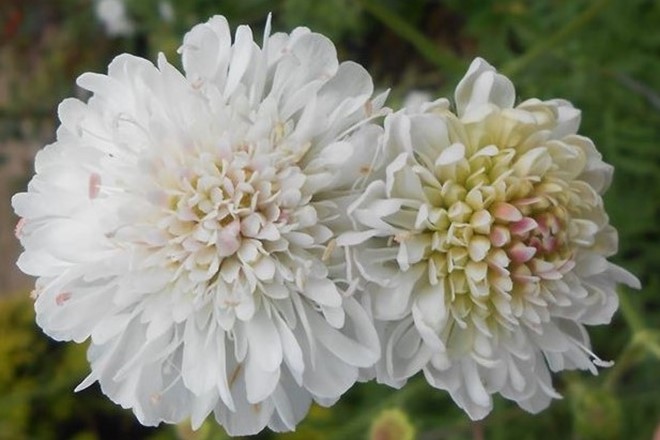
Knautia arvensis 'Rachael'
© A Cann
Lysimachia
From creeping, ground cover plants to stately perennials, this genus can survive in a variety of settings. The UK native species have yellow flowers, but the garden types include whites and deep maroons.
Osmanthus
These evergreen shrubs have attractive foliage in a variety of shapes and highly scented flowers in spring. Suitable for a woodland garden or as a foil for other plants in a mixed border, they will grow in sun or semi shade. There are 17 cultivars and 10 species in cultivation in the UK.
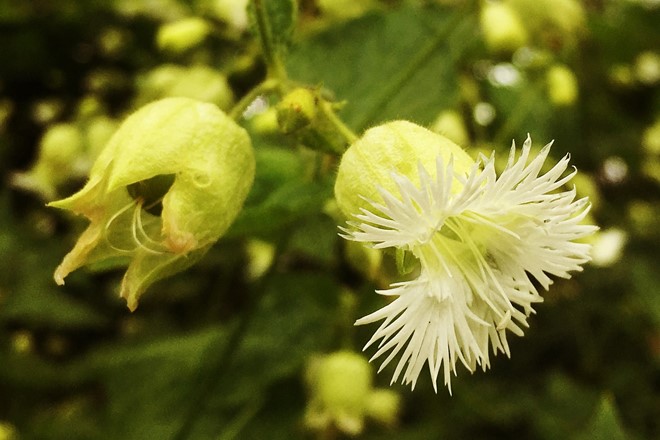
Silene fimbriata
© Liz Edwards
Phygelius
These are low growing evergreen shrubs but are often treated as perennials. The tubular flowers are held on long stems and come in stunning tones of pink, red and occasionally yellow, and will last from mid-summer into the autumn.
Silene
Some Silene are familiar wildflowers, also known as campions or catchflys. There are many other species to be found in the UK, from alpines to border perennials. The colour palette of Silene ranges from pinks, lilacs, whites and reds, and they flower from late spring through early summer. The genus Lychnis is now included in Silene.
Top 5 missing trees
Prunus armeniaca (Apricot)
Apricots have been grown in the UK since Tudor times and the ‘Moorpark’ cultivar was referenced by Jane Austin in Mansfield Park. There are also many new cultivars being introduced with better cold tolerance or a dwarf habit. There are currently 30 cultivars available for sale in the UK.
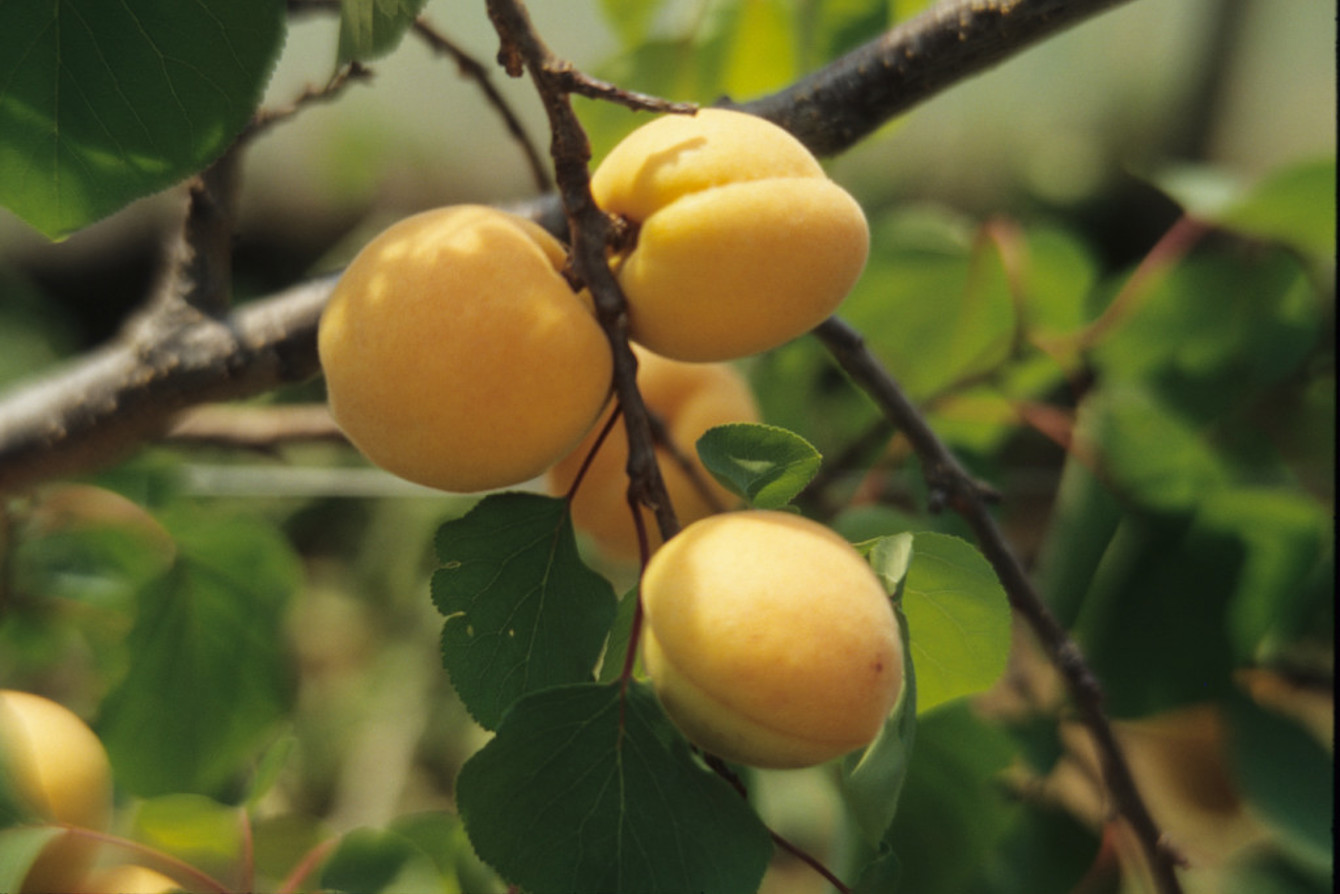
Prunus armeniaca 'Alfred'
© J. Arbury
Sequoia and Sequoiadendron
There are a handful of each genus in cultivation in the UK. One for those with plenty of space.
Cedrus
Over 50 cultivars of cedars are spread over 4 species. It would be possible to choose just one species to focus on.
Koelreuteria
Also known as the golden rain tree, there are nine species, subspecies and cultivars currently available.
Gleditsia
Deciduous trees with spines and fern-like foliage, and with attractive flowers. Four species and seven cultivars currently available.
Top 5 missing marginals/wet garden plants
Filipendula
The fragrant flowers of meadowsweet grow wild in damp places. There are also many other species (9) and cultivated forms (20) grown in our gardens.
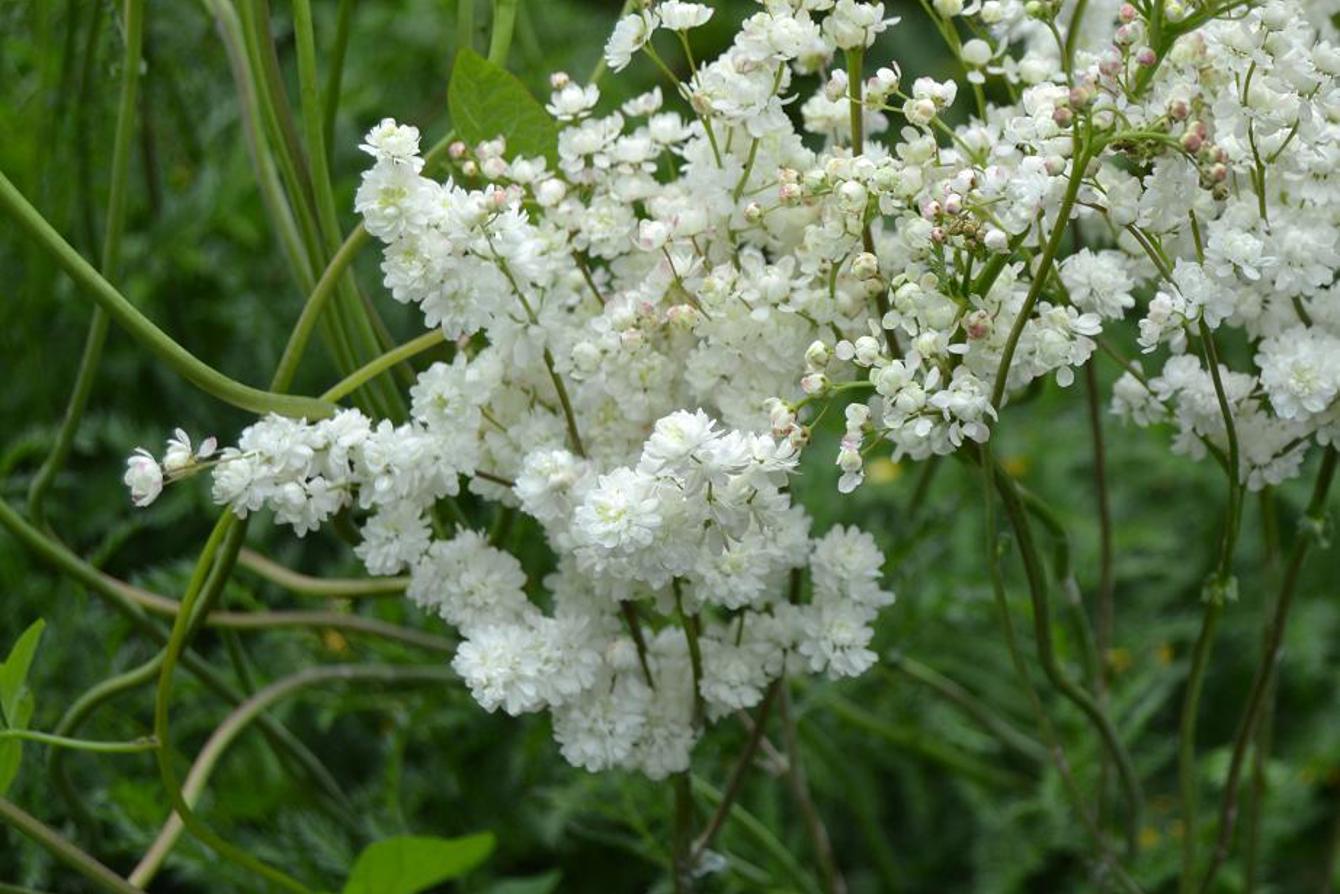
Filipendula vulgaris 'Multiplex'
© K Inman
Typha
Better known as bulrushes, there are 7 species or cultivars currently available.
Caltha
The marsh marigolds suit a waterside position. 5 species and 10 cultivars available.
Lythrum
Nectar rich flowers, known for attracting bees, beneficial insects, butterflies/moths and other pollinators. Likes moist soils near pond and stream edges.
Ligularia
There are 13 species and over 30 cultivars of this tall perennial with yellow flowers and striking foliage.
Top 5 missing grasses etc.
Carex
There are over 70 ornamental sedge cultivars available in the UK, that come in a range of colours.
Deschampsia
This elegant, tufted grass grows in a range of conditions. There are 21 cultivars currently available.
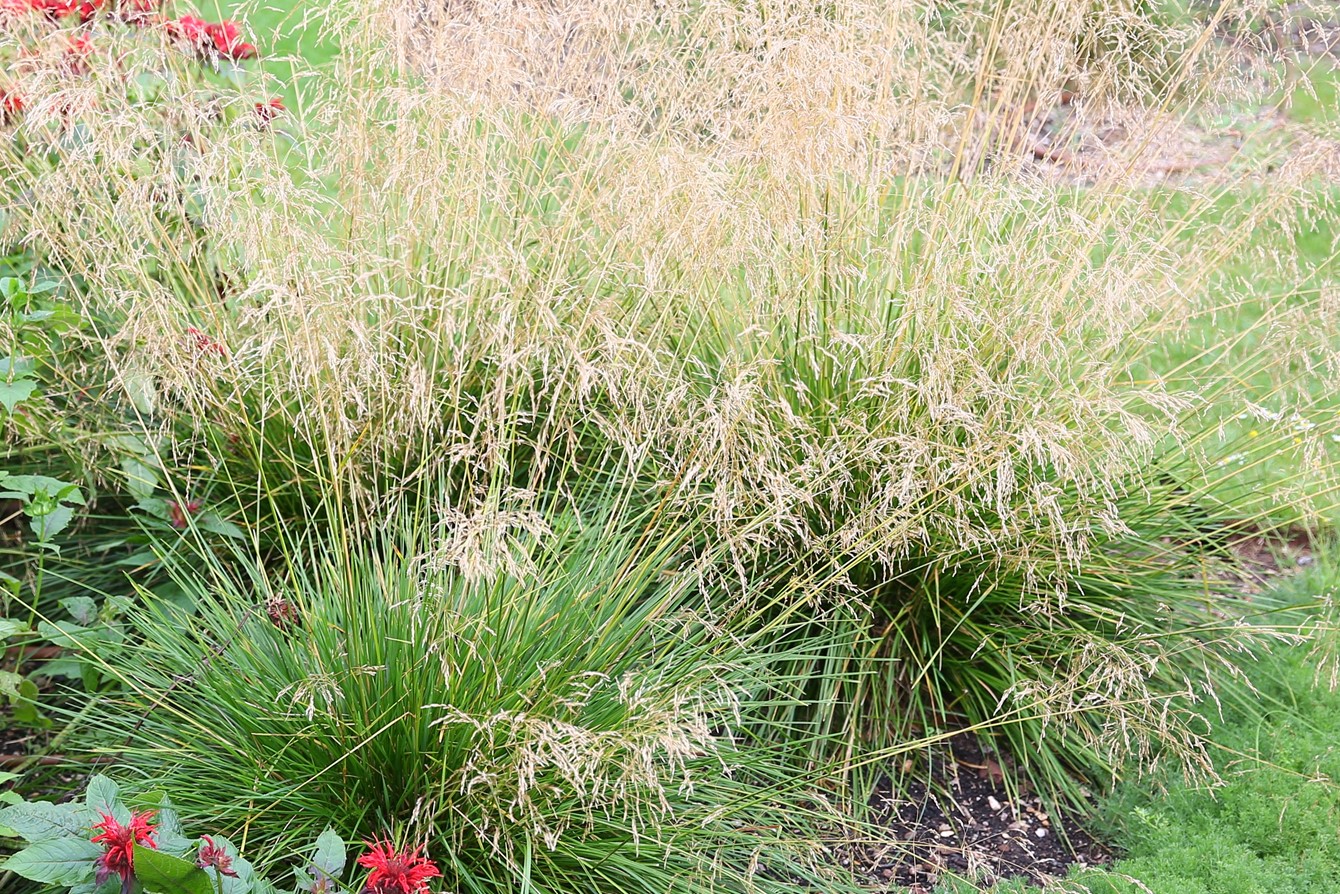
Festuca
These grasses are often found in shades of glaucous blue, and have fine, needle like leaves. 20 cultivars and over 20 species are currently for sale in the UK.
Cyperus
An unusual member of the sedge family, with clusters of leaves and flowers at the top of the stems. Ten species and a couple of cultivars are currently available in UK horticulture.
Luzula
The wood-rushes thrive in shady places and have attractive and long lasting flower heads. Around eight species and fifteen cultivars are available.
Top 10 missing shrubs
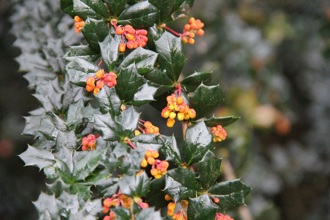
Berberis lologensis 'Mystery Fire'
© Plant Heritage
Berberis
Berberis come in deciduous or evergreen forms and are known for their colourful flowers and berries, as well as their thorns. The flowers are very attractive to pollinating insects and some have edible berries. The most familiar species is B. thunbergii, with almost 70 cultivars available, but there are also over 30 species grown in the UK.
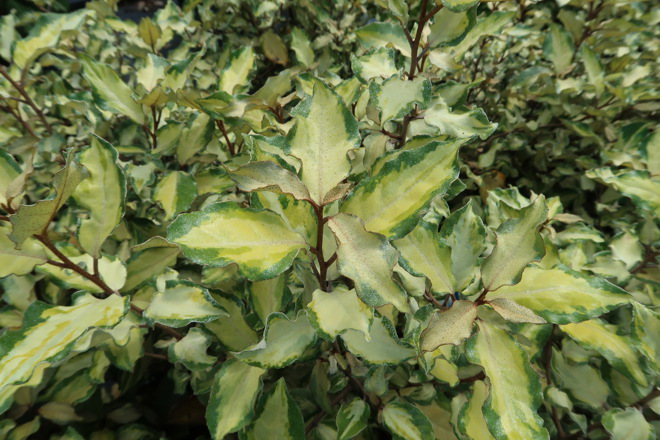
Elaeagnus × submacrophylla Maryline®
Elaeagnus
For delicious scent which fills the air on a still day, Elaeagnus is a winner. The various species flower either in spring and early summer or in the autumn. They are also known for foliage interest and some have edible berries too. There are 45 species and cultivars currently available.
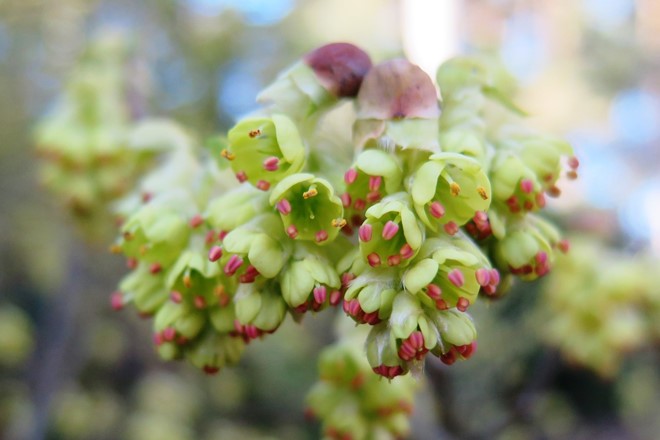
Corylopsis glabrescens
Corylopsis
Five species and five cultivars as well as a handful of other forms are currently available of this fragrant, winter flowering genus.
Osmanthus
Evergreens suitable for a woodland garden or as a foil for other plants in a mixed border, they will grow in sun or semi shade. There are 17 cultivars and 10 species in cultivation in the UK.
Pieris
Pieris are grown for both flowers and foliage interest. They need moist, acid conditions and there are 45 cultivars currently available.
Pittosporum
The glossy, evergreen leaves are the standout feature of these shrubs or small trees, which can be used for hedging, ground cover or as specimen plants. The small flowers can be scented and are produced in late spring to early summer.
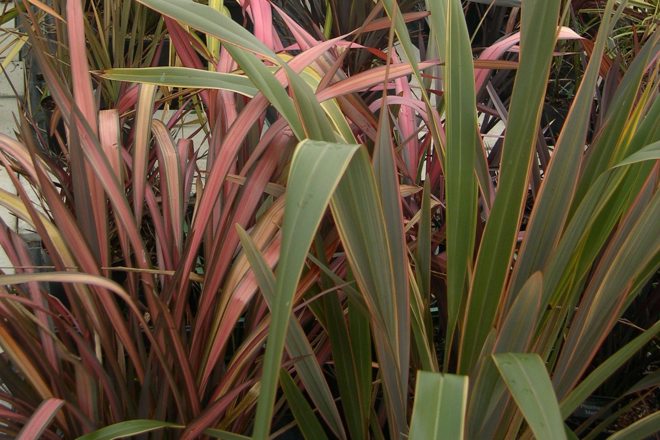
Phormium
Phormium
Also called New Zealand flax, this vigorous, easy to grow plant looks good all year round. Good for windy or coastal sites, the long, strap-like leaves vary from deep purples to reds and yellows, and can also be striped. There are about 60 cultivars available.
Spiraea
These popular, deciduous shrubs have arching branches with profuse flowerheads in shades of pinks and whites, popular with bees. The white types are commonly called bridal wreaths. Some also have bright golden foliage in spring. There are around 50 cultivars and 20 species in UK horticulture.
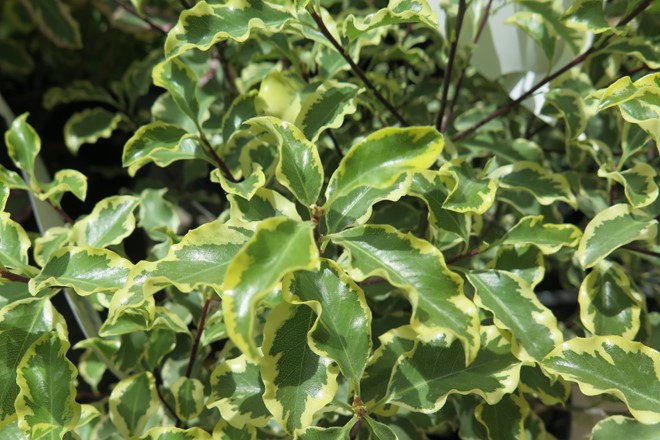
Pittosporum tenuifolium 'Variegatum'
© Plant Heritage
Genista
Also known as broom, this spring/early summer flowering shrub has bright yellow flowers along the long, arching stems. In the UK there are currently 10 species and 8 cultivars available.
Nandina
This small shrub sports sprays of white flowers, red berries and attractive autumn colour. There are 17 cultivars currently available.
Top 10 missing perennials
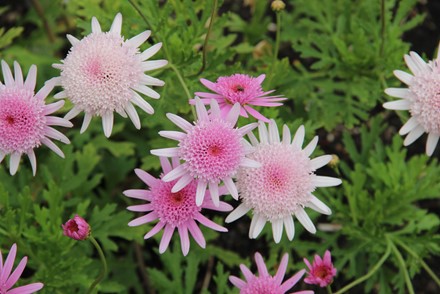
Argyranthemum 'Vancouver'
© G Groombridge
Argyranthemum
These short lived, tender perennials are hugely floriferous through the summer months. It also makes a great cut flower. Best overwintered in a frost free place as rooted cuttings. Around 40 cultivars currently available.
Aruncus
Also known as goat’s beard, these tall perennials like moist, rich soils and shady stream sides. From ferny foliage, the tall, fluffy flowerheads appear throughout the summer months. 17 cultivars and 6 species are available
Gaura (Oenothera)
Gaura are drought tolerant, deciduous perennials, that flower for a long period at the end of summer and into autumn. There are about 50 cultivars listed in the RHS Plant Finder, largely in shades of pinks and whites. Popular in prairie style planting. Recently reclassified as Oenothera (G)
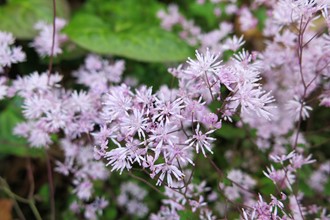
Thalictrum kiusianum
Papaver (Oriental Group)
These pretty perennial poppies are a stalwart of early summer. Since the 19th century oriental poppies have been bred to produce a range of coloured flowers, from pastel shades to deep plums, in addition to their original red.
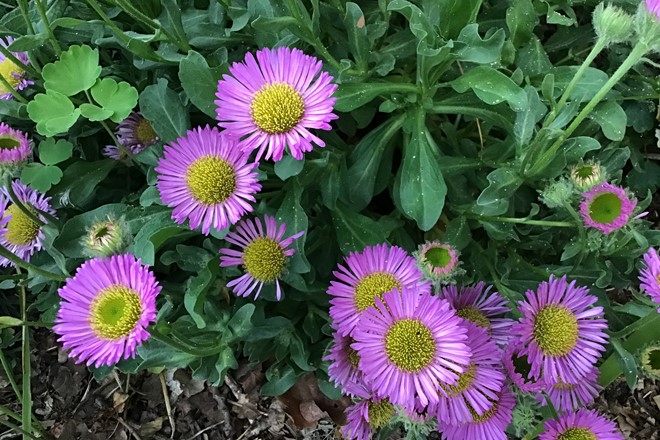
Erigeron 'Sennen'
© A Tweddle
Erigeron
Related to daisies, Erigeron can be annuals, biennials or perennial. They thrive in sunny spots with some happily growing through the cracks in paving. There are 30 cultivars currently available in the UK, with many more to be found worldwide.
Lysimachia
From creeping, ground cover plants to stately perennials, this genus can survive in a variety of settings. The UK native species have yellow flowers, but the garden types include whites and deep maroons.
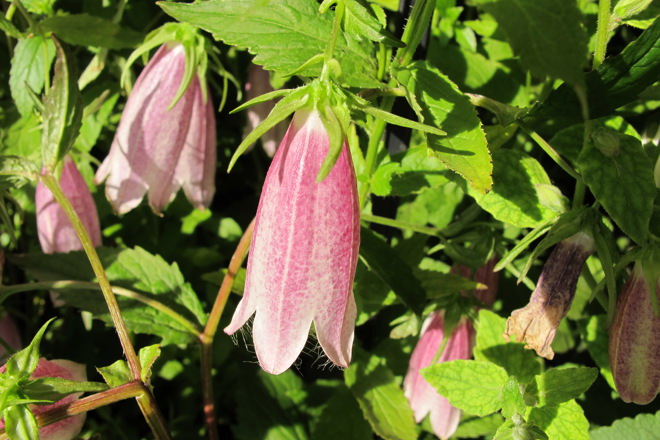
Campanula takesimana 'Elizabeth'
Campanula
There are about 80 species and 232 cultivars currently available but any potential collection could choose to do just a subset of these, for example, just Campanula persicifolia cultivars.
Stachys
A member of the mint family, they are distinguished by their densely hairy leaves. Many cultivars have been bred to highlight their soft, silvery foliage. About 12 species and cultivars are in cultivation in the UK.
Vinca
The periwinkles make great ground cover plants, with their evergreen foliage on prostrate stems. The flowers come in pinks, whites and purple and flower early in the year, benefitting early flying pollinators. About 30 cultivars are currently available.
Zantedeschia
There are about 70 cultivars available of these dramatic plants. The hardy outdoor types tend to have white flowers whilst the indoor ones come in a range of colours.
Top three missing tender/indoor plants
Adiantum
Also called maiden-hair ferns, the delicate ferny foliage prefers humid conditions and the majority are not hardy across all the UK, but commonly grown as houseplants. Ten species and 11 cultivars are currently available in the UK.
Colocasia
These dramatic, foliage plants can be grown outside in a warm, sheltered spot, or can be grown in greenhouses or conservatories if space allows. There are 19 cultivars available in the UK.
Sansevieria
These make popular houseplants due to their tolerance for low light. Also known as ‘mother-in-law’s tongues’, the upright, leathery leaves come in many patterns of variegation.
Top three missing spring flowers
Aubrieta
Well known as one of the first bursts of colour in the garden in spring, aubretia lights up a rock garden, or any well drained patch of ground with its pink, purple or blue flowers. It makes an excellent groundcover and is a good early source of pollen for insects. Fashionable in the 1970s there are lots of cultivars falling out of nursery catalogues so we would welcome a collection of this genus before many more are lost.
Doronicum
The bright, yellow blooms of Doronicum, also called leopard's bane, are often one of the first garden perennials to put on a show. This is a relatively small plant group, with only 13 species and cultivars currently available.
Lamium
Also known as deadnettle, over 30 cultivars have been bred for gardens, often for the coloured foliage. Popular with bees, these plants make good ground cover.
Collections don't just have to be based around a single genus. Many are put together in recognition of a noted breeder or plantsperson, or around the plants bred at a specific place.
The heritage of these people and plants is important to research and conserve before they are lost to horticulture. There are some suggestions below but this is the tip of the iceberg!
Plants associated with Valerie Finnis
Valerie Finnis had a strong association with Waterperry Horticultural School for Women in Oxfordshire, where she taught for many years, and in later life lived at Boughton House in Northamptonshire.
Plants still available include:
- Artemisia ludoviciana ‘Valerie Finnis’
- Artemisia stelleriana ‘Boughton Silver’
- Clematis 'Bill MacKenzie’ (C. orientalis x C. tangutica)
- Dianthus ‘Fair Folly’ syn. ‘Constance Finnis'
- Helianthemum 'Boughton Double Primrose'
- Helleborus x sternii ‘Boughton Beauty’
- Muscari armeniacum syn neglectum 'Valerie Finnis’
- Veronica albicans (Recurva Group) 'Boughton Silver' (H)
- Veronica cupressoides ‘Boughton Dome’
- Viola ‘Belmont Blue’ syn. ‘Boughton Blue’
Others that may be harder to find include: Achillea ptarmica 'Boughton Beauty', Allium ‘Valerie Finnis’, Berberis ‘Boughton Red’ , Clematis integrifolia ‘Finnis Form’ (I), Dactylorhiza ‘Valerie Finnis’, Dianthus ‘Valerie Finnis’, Erysimum ‘Valerie Finnis’, Glandularia ‘Boughton House’, Helleborus x sternii Boughton Group syn. ‘Boughton Beauty Strain’, Nepeta ‘Valerie Finnis’, Osteospermum ‘Valerie Finnis’, Papaver (Oriental Group) ‘Constance Finnis’, Papaver rhoeas ‘Valerie Finnis’, Thymus ‘Valerie Finnis’
Plants associated with Margery Fish
Margery Fish was a gardener and garden writer who influenced the informal cottage garden style of gardens. The garden she created, at East Lambrook Manor in Somerset is still in existence as an English Heritage grade 1 listed garden. But what about the plants?
Plants still available include:
- Penstemon ‘Margery Fish’
- Astrantia ‘Shaggy’ syn. ‘Margery Fish’
- Bergenia ‘Margery Fish’ syn. ‘Lambrook’
- Pulmonaria ‘Margery Fish’
- Euphorbia characias subsp. wulfenii Margery Fish Group syn. ‘Lambrook Gold’
- Galanthus nivalis ‘Margery Fish’
- Chrysanthemum ‘Margery Fish’
Others that may be harder to find are: Lamium maculatum ‘Margery Fish’, Nerine bowdenii ‘Margery Fish’, Penstemon ‘Sour Grapes’ M. Fish, Stachys byzantina ‘Margery Fish’, Veronica ‘Primley Gem’ syn. Hebe ‘Margery Fish’
Plants bred by Bees' Nursery, Cheshire
Bees' was founded in 1904 as the commercial side of Arthur Bulley's Ness Garden - now Ness Botanic Garden. He hired many of the plant hunters of the day to bring back unusual specimens to sell.
Plants still available include:
- Clematis 'Bees' Jubilee'
- Kniphofia ‘Bees’ Jubilee’
- Kniphofia 'Bees' Lemon'
- Kniphofia 'Bees' Sunset' syn. ‘Shining Sceptre’
- Lobelia cardinalis 'Bees' Flame'
- Primula beesiana
May be harder to find: Armeria Bees' hybrids, Armeria ‘Bees’ Ruby’, Lobelia ‘Bees’ Ridge’, Kniphofia ‘Bees’ Orange’, Kniphofia ‘Bees’ Yellow’, Kniphofia ‘Bees’ Golden Amber’, Kniphofia ‘Bees’ Red Guard’, Kniphofia ‘Bees’ Yellow Monarch’, Kniphofia ‘Bees’ Torch’, Kniphofia ‘Bees’ Flame’, Kniphofia ‘Bees’ Amber’, Kniphofia ‘Bees’ Cherry Red’, Kniphofia ‘Bees’ Sunrise’, Tanacetum coccineum 'Bees' Jubilee', Tanacetum coccineum 'Bees' Pink Delight’
Plants associated with Gertrude Jekyll
Jekyll designed over 400 gardens in the UK and from her garden centre in Munstead Wood, Surrey, bred many plants too.
Plants still available include:
- Aquilegia vulgaris ‘Nivea’ syn. ‘Munstead White’
- Lavandula angustifolia 'Munstead'
- Nigella damascena 'Miss Jekyll' & ‘Miss Jekyll Alba’
- Pulmonaria angustifolia 'Munstead Blue'
- Rosa [Gertrude Jekyll]=('Ausbord')
- Rosa [Munstead Wood]=('Ausbernard')
- Hylotelephium syn. Sedum 'Munstead Red'
- Hylotelephium ‘Munstead Purple’
- Lunaria annua ‘Munstead Purple’
- Vinca minor f. alba 'Gertrude Jekyll'
May be harder to find: Bignonia capreolata ‘Jekyll’, Coleus scutellarioides ‘Gertrude Jekyll’, Helleborus foetidus ‘Miss Jekyll’, Primula Munstead strain, Pulmonaria angustifolia ‘Munstead Variety’, Rhododendron ‘Gertrude Jekyll’, Rhododendron ‘Munstead’
Download the full list of missing collections pre 2023.

